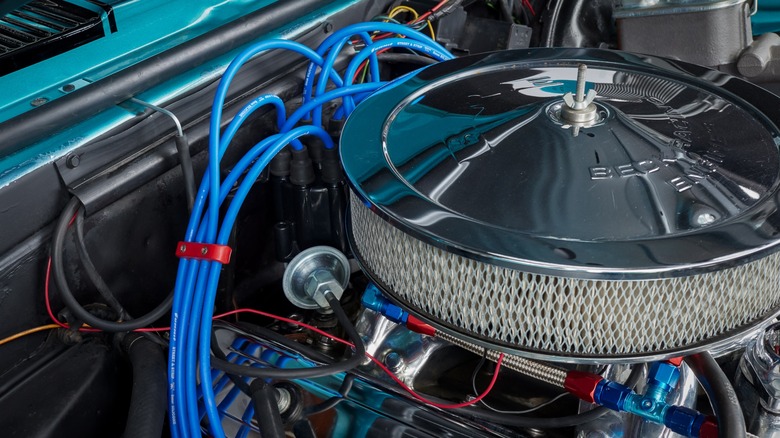When General Motors introduced the High Energy Ignition (HEI) distributor in the mid-1970s, it was revolutionary. So much so that it still has a strong following among today’s hot rodders. Like other innovations from that oil crisis-era, improved fuel economy was a huge concern. At the same time, emissions standards were tightening (hello, catalytic converters) and the HEI ignition’s powerful spark improved combustion for a clean burn of leaner fuel mixtures. But we know what you’re thinking: Saving the planet aside, does HEI’s higher spark voltage and longer duration actually deliver a meaningful horsepower bump versus antiquated points ignition?
There’s no question that the breaker point, or just “points,” ignition system was getting long in the tooth by the time the HEI distributor debuted. Points had been around since the turn of the 20th century and powered millions of engines, but not without certain drawbacks. Debating the perceived shortcomings of points could be the subject of an entire article, but the Cliffs Notes version is that points use a ballast resistor to lower a typical 12-volt electrical system down to about 8 volts. That’s to avoid premature wear on the points themselves but at the expense of reduced energy to the spark plugs. No matter, because points still wear out and require periodic adjustment or replacement, with fluctuating ignition timing in the bargain.
The swap has some pitfalls
In contrast to points, HEI ignition is considerably more maintenance-free. The task previously accomplished by fragile points is taken over by a reliable solid-state electronic module that can accept a full 12 volts of power. Also, there’s no external ignition coil like with a points distributor. Instead, it’s built into the HEI distributor’s cap, making for a simple install. Now would be a good time to mention that if you’re making the swap to HEI, be sure not to connect your new distributor to the ballasted resistor wire which powered the old points distributor because that’s a quick path to a terrible running engine. And yes, people actually make this mistake.
You’ll also want to verify that the HEI distributor’s larger distributor cap and internalized components will physically fit between your engine and firewall. Alternatively, check the clearance to belt-driven accessories like an alternator if the distributor is front-mounted. Speaking of front-mounted distributors, GM may have developed HEI, but it’s now available in the aftermarket to fit other makes like Ford and Mopar.
Now for the actual dyno tests
Now, does swapping from points to an HEI distributor make horsepower that you’ll actually feel in the “seat of your pants?” A while back, Hot Rod Magazine did a head-to-head comparison of distributors using a modified 350-cubic inch small-block Chevy as the test mule. This shootout went down at Westech Performance, which is highly prescient of the recently-defunct “Engine Masters” show hosted by Steve Dulcich, Steve Brule, and David Freiburger of Roadkill fame.
On the dyno, the points distributor made 444.8 horsepower, while a totally stock General Motors HEI produced 446 horsepower. Finally, an aftermarket version of the HEI from Performance Distributors — a business that’s still thriving today — made 452.8 horsepower. For the mathematically challenged, that’s an eight horsepower bump over points.
A general rule of thumb for street cars is that every 10 additional horsepower will lower your 1/4 mile time by approximately 0.10 (1/10 of one second). That’s nothing to sneeze at, but will you really be able to tell the difference cruising around town? Heck, no. That said, you’ll reduce your maintenance requirements by swapping from points to a performance-oriented HEI distributor. Plus, driving characteristics will be more consistent over the long haul because of HEI’s reliable solid-state components.




